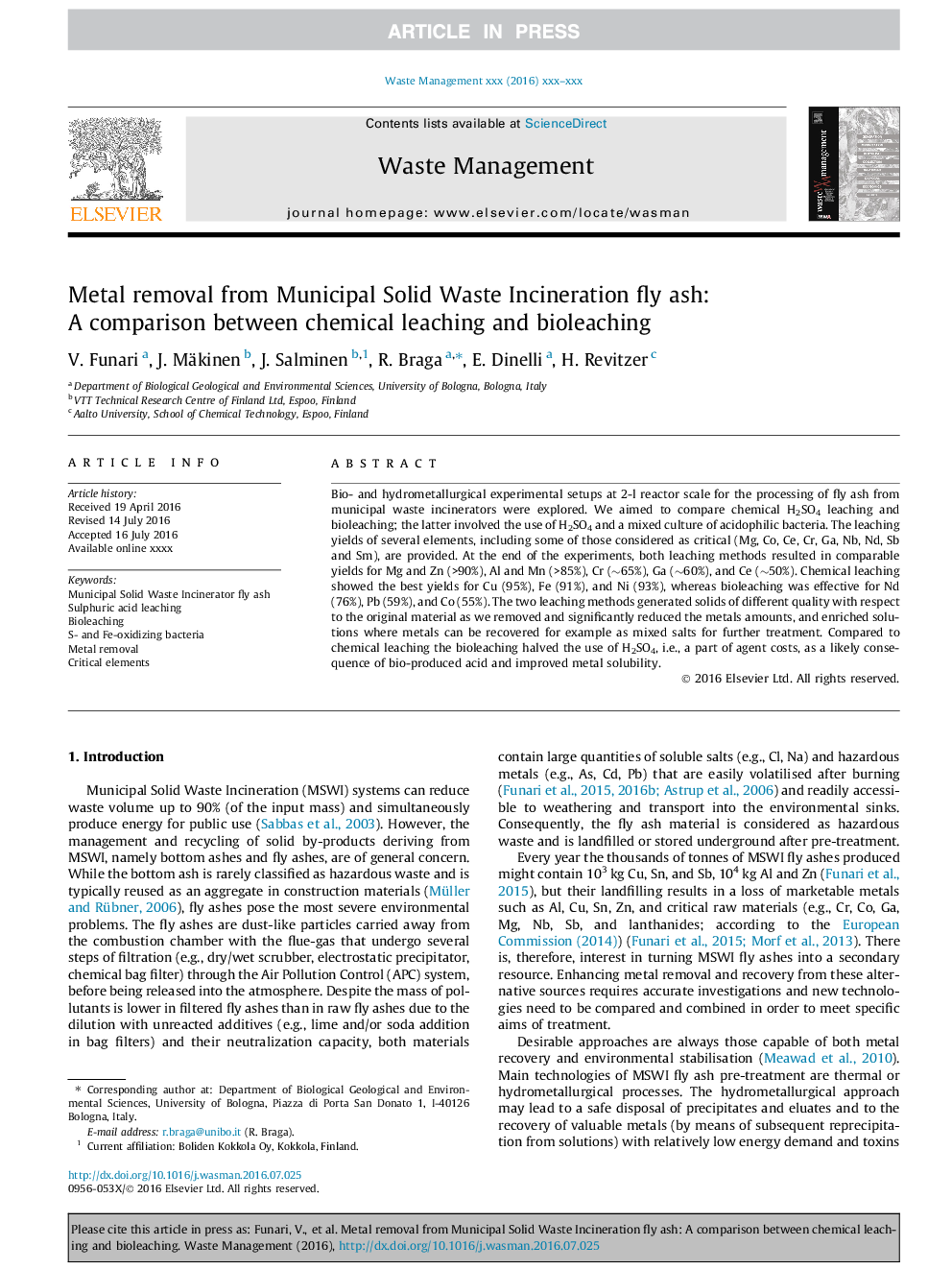| Article ID | Journal | Published Year | Pages | File Type |
|---|---|---|---|---|
| 5756801 | Waste Management | 2017 | 10 Pages |
Abstract
Bio- and hydrometallurgical experimental setups at 2-l reactor scale for the processing of fly ash from municipal waste incinerators were explored. We aimed to compare chemical H2SO4 leaching and bioleaching; the latter involved the use of H2SO4 and a mixed culture of acidophilic bacteria. The leaching yields of several elements, including some of those considered as critical (Mg, Co, Ce, Cr, Ga, Nb, Nd, Sb and Sm), are provided. At the end of the experiments, both leaching methods resulted in comparable yields for Mg and Zn (>90%), Al and Mn (>85%), Cr (â¼65%), Ga (â¼60%), and Ce (â¼50%). Chemical leaching showed the best yields for Cu (95%), Fe (91%), and Ni (93%), whereas bioleaching was effective for Nd (76%), Pb (59%), and Co (55%). The two leaching methods generated solids of different quality with respect to the original material as we removed and significantly reduced the metals amounts, and enriched solutions where metals can be recovered for example as mixed salts for further treatment. Compared to chemical leaching the bioleaching halved the use of H2SO4, i.e., a part of agent costs, as a likely consequence of bio-produced acid and improved metal solubility.
Keywords
Related Topics
Physical Sciences and Engineering
Earth and Planetary Sciences
Geotechnical Engineering and Engineering Geology
Authors
V. Funari, J. Mäkinen, J. Salminen, R. Braga, E. Dinelli, H. Revitzer,
